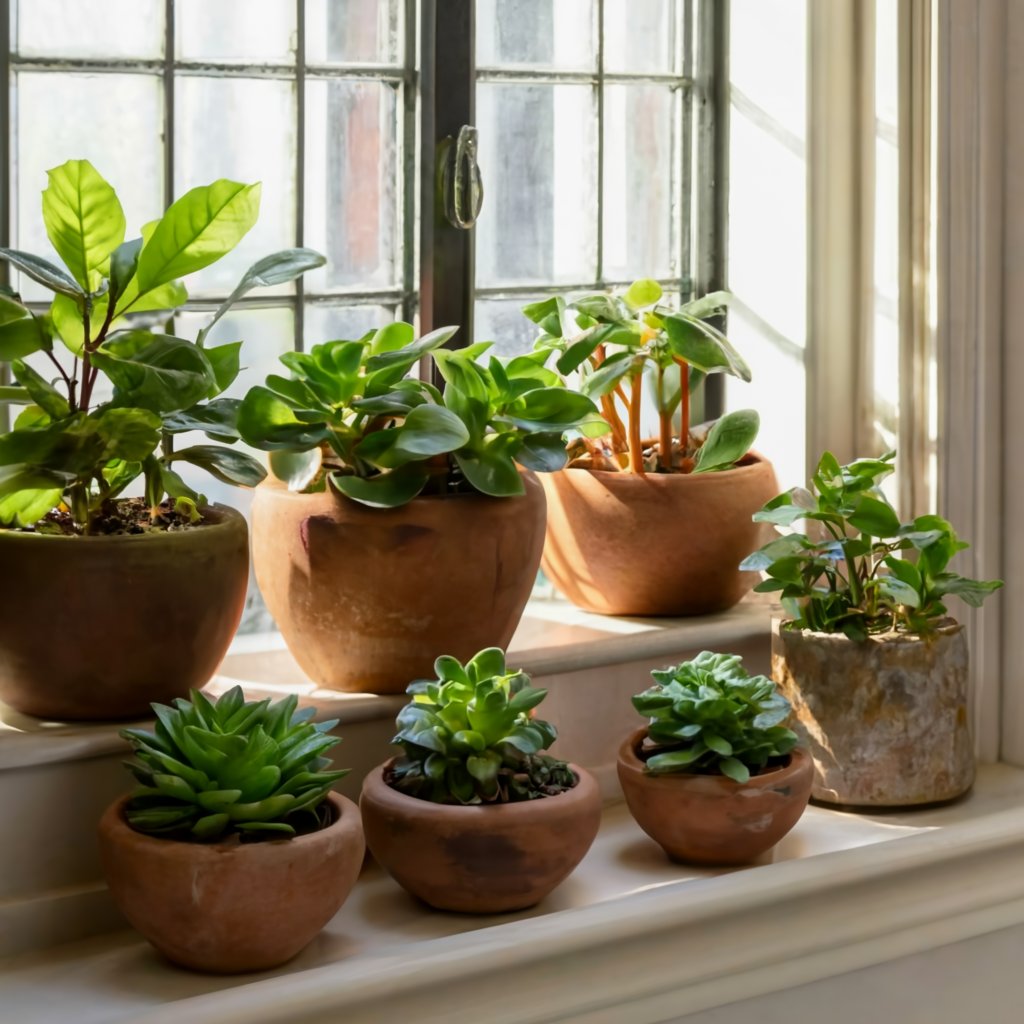
The jade plant, with its plump, emerald leaves and reputation for attracting good fortune, is a beloved houseplant. But what if you could cultivate more than just positive vibes? Propagating your jade plant unlocks the secret to multiplying both your leafy friends and, according to tradition, your share of good luck.
This beginner-friendly guide will equip you with all the knowledge you need to successfully propagate your jade plant. Unfurl new jade plant life, watch your plant family flourish, and perhaps even witness a boost in prosperity along the way.
This post may have affiliate links. This means that sometimes when you click a link on our site and make a purchase on Amazon, we may earn a small commission at no additional cost to you. We only recommend products we truly believe in, and your support helps keep us running!
Understanding Jade Plant Propagation: From Single Stem to Leafy Legacy
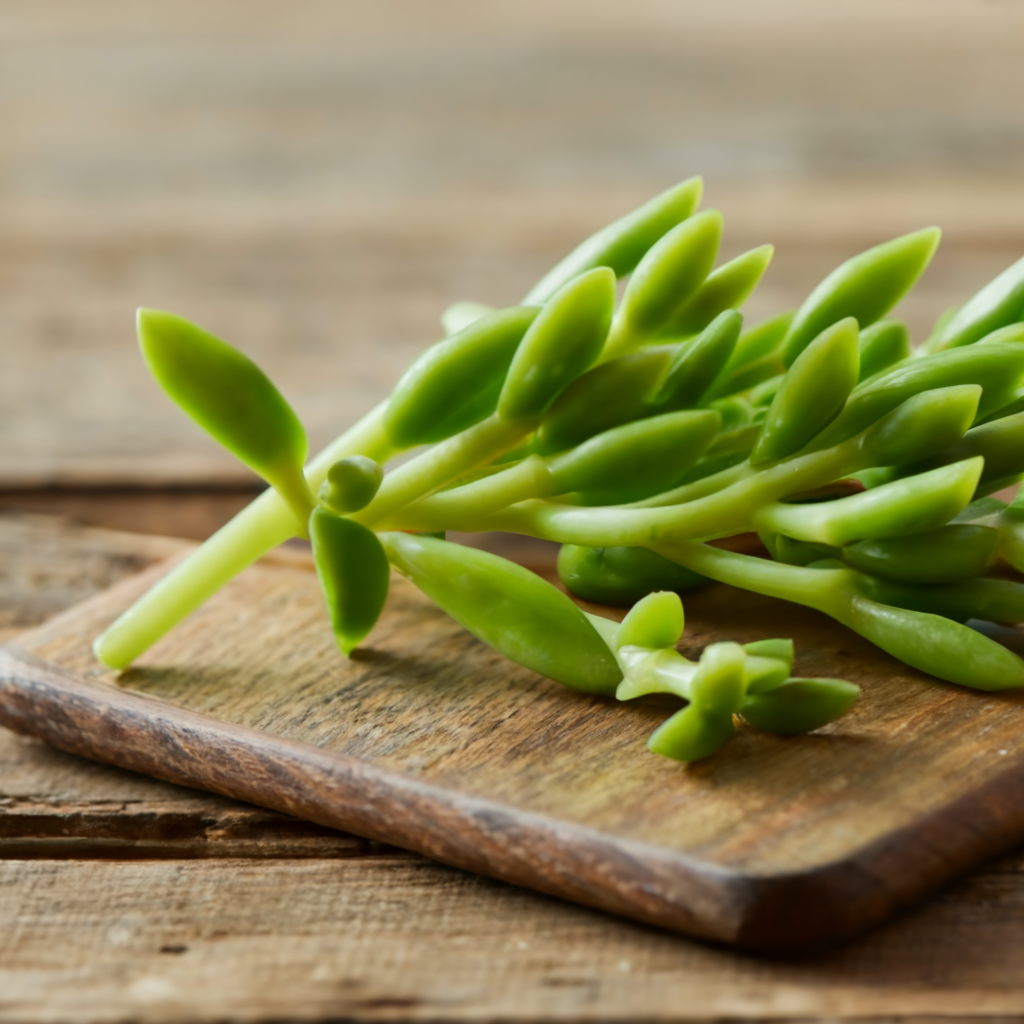
Jade plants, scientifically known as Crassula Ovata, are incredibly resilient succulents. Propagation capitalizes on this strength, allowing you to create new jade plants from a single, healthy parent plant. There are two main methods for jade plant propagation: stem cuttings and leaf cuttings.
Stem cuttings, generally considered the more successful method, involve taking a section of stem from the parent plant and encouraging it to sprout roots to become a new, independent plant. Leaf cuttings, while slightly less predictable, offer the chance to cultivate entirely new jade plants from individual leaves.
Preparing for Propagation: Assembling Your Sprouting Sanctuary
Before diving into the propagation process, gather the necessary tools and materials to create the perfect environment for your jade plant cuttings to flourish.
Essential Supplies:
- Sharp knife or shears: Opt for sterilized tools to ensure clean cuts and minimize the risk of infection.
- Potting mix: Choose a well-draining succulent or cactus mix. You can also create your own by combining equal parts potting mix and perlite.
- Pots: Select pots with drainage holes that are slightly larger than the base of your cutting.
- Water spray bottle: Keep your cuttings misted during the propagation process.
- Fungicide (optional): Apply a light coat of fungicide to the cut ends of your jade plant cuttings, particularly if you live in a humid environment, to ward off fungal diseases.
Creating the Ideal Environment:
Jade plants thrive in bright, indirect sunlight. Choose a location for your propagating plantlets that receives ample indirect light, avoiding harsh afternoon sun.
While jade plants are tolerant of a range of temperatures, ideally, aim for a warm environment between 65-75 degrees Fahrenheit (18-24 degrees Celsius) during propagation.
Stem Cuttings: Cultivating New Life from a Branch
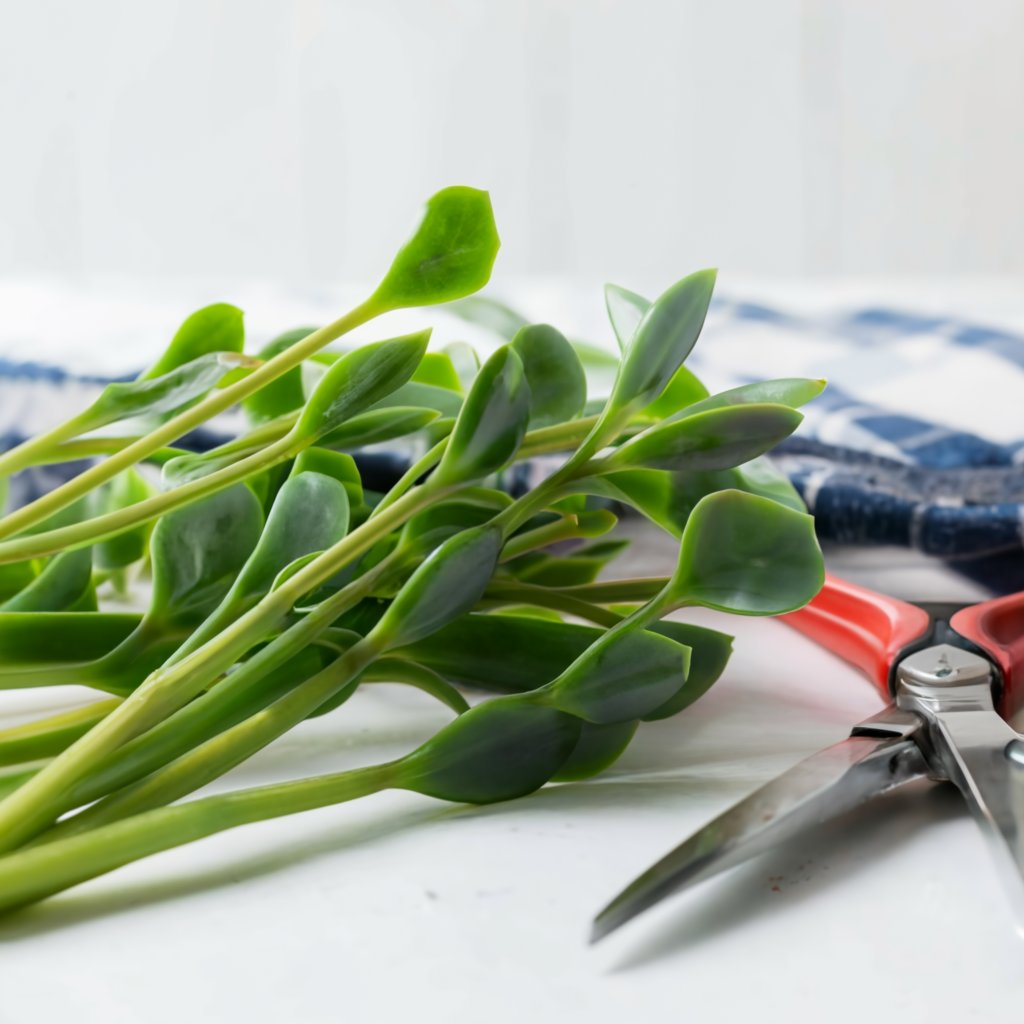
Stem cuttings offer the most reliable method for propagating jade plants. Here’s a step-by-step guide:
- Selecting the Right Stem: Choose a healthy, mature stem from your jade plant that is firm and not too woody. Ideally, select a stem with at least a few sets of leaves.
- Making the Cut: Using your sterilized shears or knife, make a clean cut just below a leaf node (the small bump where a leaf joins the stem). Aim for a cutting that is 2-4 inches (5-10 cm) long.
- Preparing the Cutting: Remove the lower leaves from the cutting, leaving only the top two or three sets. This allows the plant to focus its energy on root development.
- Callus Formation (Optional): Allow the cut end of the stem to callous over for a few days. Callousing is the formation of a protective layer of tissue over the wound, which can help prevent rot. To achieve this, leave the cutting in a cool, dry place out of direct sunlight for 2-3 days.
- Planting the Cutting: Fill your pot with the well-draining succulent mix, leaving some space at the top. Make a small hole in the center of the potting mix and insert the calloused end of the cutting. Gently firm the soil around the base of the cutting.
- Watering and Care: Water the pot lightly until the water drains from the drainage holes. Avoid overwatering, which can cause the cutting to rot. Mist the leaves daily to maintain humidity, especially in dry climates.
- Patience is a Virtue: Rooting can take several weeks. Be patient and resist the urge to overwater. Signs of successful rooting include new growth appearing at the top of the cutting and the stem feeling firm when gently tugged.
Leafy Magic: Propagating from a Single Jade Leaf
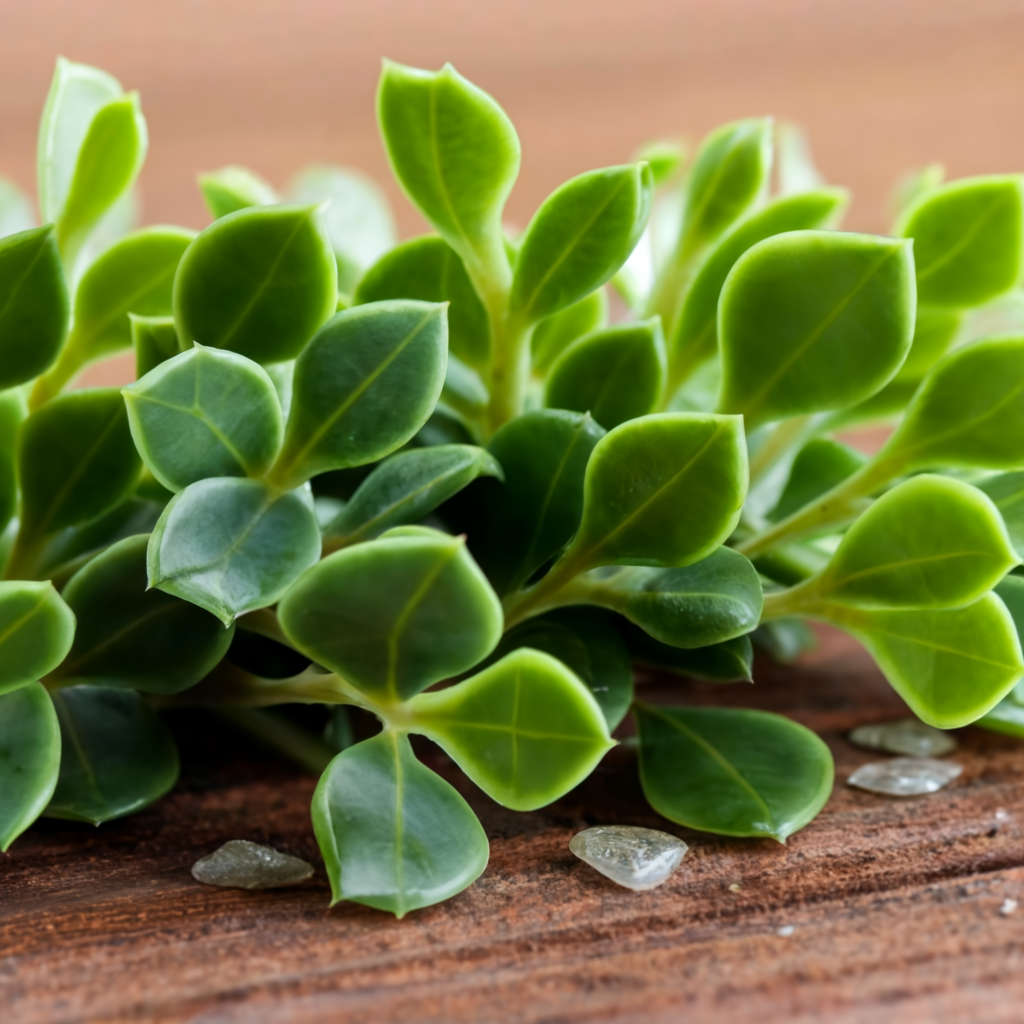
While success rates are lower than with stem cuttings, propagating from leaves offers a fun way to potentially cultivate new jade plants. Here’s how to give it a try:
- Selecting the Perfect Leaf: Choose a plump, healthy leaf from your jade plant.
- A Clean Separation: Gently twist or pull the leaf away from the stem, ensuring you get the entire base of the leaf
- Drying Time: Just like with stem cuttings, allow the severed end of the leaf to callous over for a few days. Place the leaf on a well-draining tray or paper towel in a cool, dry location out of direct sunlight.
- Encouraging Root Growth (Optional): There are two schools of thought for encouraging root growth from a jade leaf. Some recommend leaving the leaf completely undisturbed. Others suggest gently dipping the calloused end of the leaf into a rooting hormone before planting. Rooting hormone is a natural or synthetic product that can stimulate root development.
- Planting the Leaf: Fill a small pot with your succulent mix. You can plant several leaves in one pot, but leave space between them for potential growth. Lay the calloused end of the leaf flat on top of the soil, ensuring good contact with the potting mix. Don’t bury the leaf itself.
- Light Misting and Patience: Lightly mist the soil around the leaf cutting to provide moisture. Avoid directly misting the leaf itself, as this can encourage rot. As with stem cuttings, be patient. Rooting can take several weeks or even months. Signs of success include the formation of tiny roots at the base of the leaf and the emergence of new growth.
Success! Witnessing the Rewards of Propagation
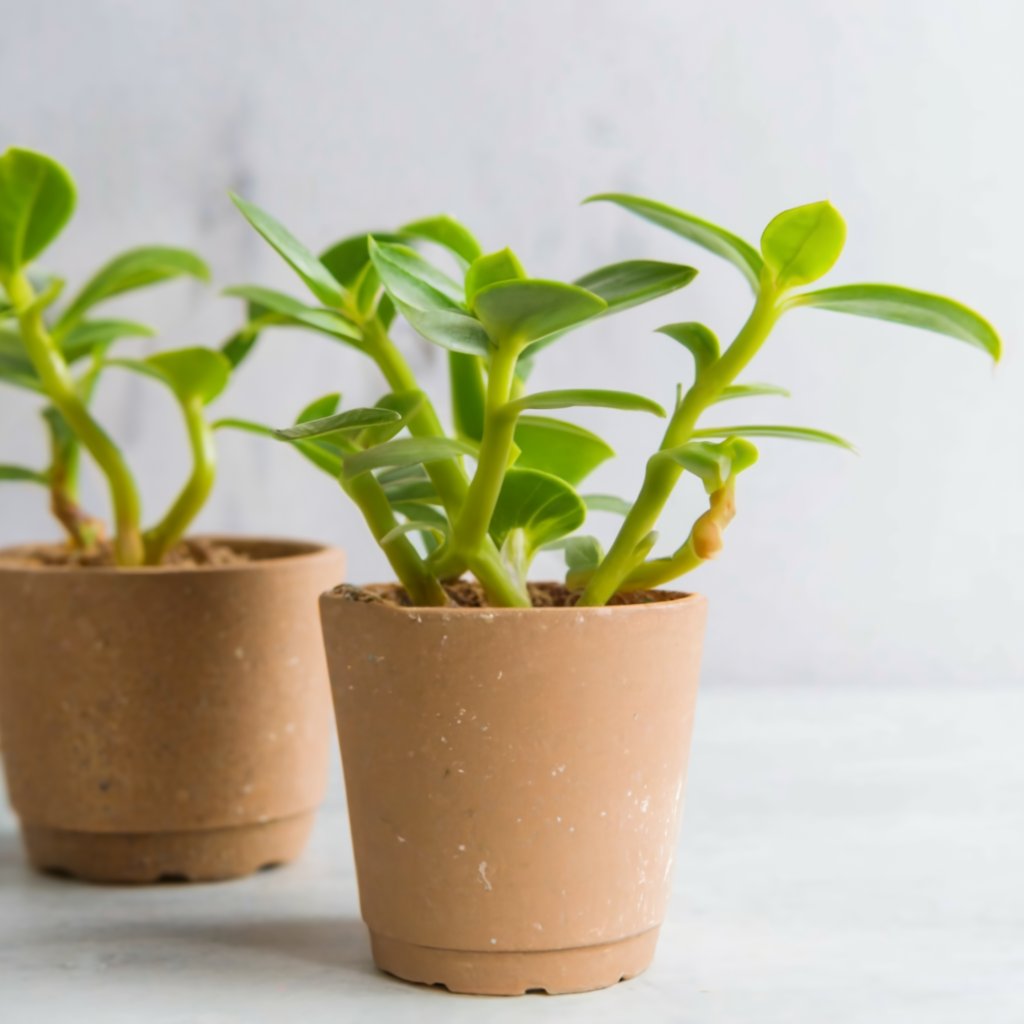
Once your jade plant cuttings have sprouted roots and begun to show signs of new growth, you’ve successfully propagated your plant! Here’s how to care for your newfound leafy treasures:
- Gradually Increase Watering: As your cuttings establish roots, you can gradually increase watering. Water deeply when the soil feels dry to the touch, allowing the excess water to drain completely.
- Light Matters: Continue to provide your new jade plants with bright, indirect sunlight.
- Fertilization (Optional): During the active growing season (spring and summer), you can fertilize your young jade plants with a diluted succulent fertilizer once a month. However, fertilizing is not essential for healthy growth.
- Repotting: Once your propagated jade plants have developed a good root system and are actively growing, you can repot them into slightly larger pots.
